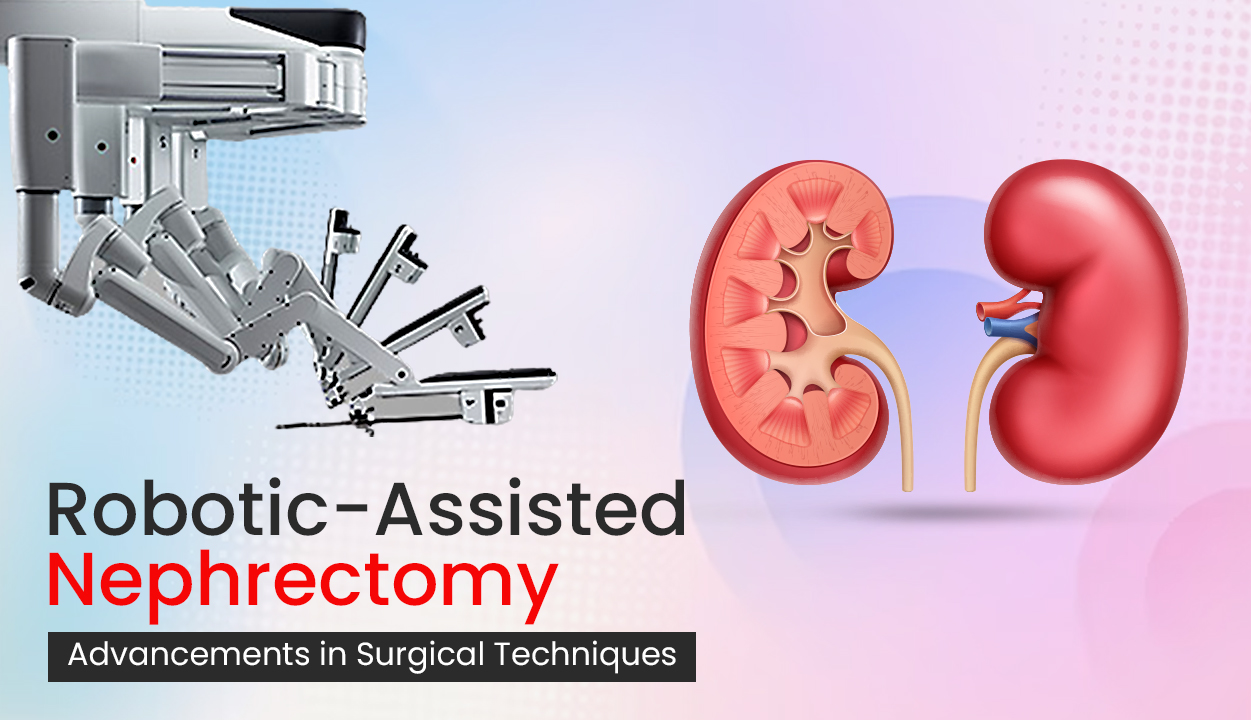
Robotic-Assisted Nephrectomy: Advancements in Surgical Techniques
In recent years, robotic surgery has emerged as a game-changer in the field of surgical procedures. One particular application, robotic-assisted nephrectomy, has revolutionized the way kidney removal surgeries are performed. This minimally invasive technique, also known as laparoscopic nephrectomy, combines the precision of robotics with the benefits of minimally invasive surgery. In this blog, we will explore the advancements and advantages of robotic-assisted nephrectomy, highlighting its impact on patient outcomes and overall surgical experience.
The Evolution of Nephrectomy
Traditional open nephrectomy, requiring a large incision, often resulted in longer hospital stays, increased pain, and prolonged recovery periods. The advent of laparoscopic nephrectomy brought significant improvements, allowing surgeons to perform kidney removal through small incisions. However, the limitations of laparoscopic surgery, such as restricted range of motion and reduced dexterity, led to the emergence of robotic-assisted nephrectomy.
Understanding Robotic Surgery
Robotic surgery involves the use of robotic systems controlled by surgeons to perform complex procedures with enhanced precision and flexibility. The robotic system consists of a surgical console, robotic arms, and tiny surgical instruments.
Robotic-assisted nephrectomy harnesses this cutting-edge technology to remove a diseased or damaged kidney while minimizing trauma to surrounding tissues.
Advantages of Robotic-Assisted Nephrectomy
- Enhanced Precision: Robotic systems provide surgeons with high-definition, magnified 3D images and enhanced dexterity, allowing for precise manipulation of instruments during surgery. This level of precision minimizes the risk of damage to surrounding tissues, nerves, and blood vessels.
- Reduced Trauma: Robotic-assisted nephrectomy involves smaller incisions compared to open surgery, resulting in reduced blood loss, decreased postoperative pain, and faster recovery. Patients often return to their daily activities sooner.
- Superior Visualizations: The 3D imaging capabilities of robotic systems offer a detailed view of the surgical site, enabling surgeons to navigate complex anatomical structures with greater ease. This enhanced visualization enhances safety and accuracy during the procedure.
Improved Patient Outcomes
Robotic-assisted nephrectomy has shown remarkable benefits for patients, including:
- Faster Recovery: With smaller incisions and reduced trauma, patients typically experience shorter hospital stays and faster recovery times, allowing them to resume their normal lives sooner.
- Reduced Complications: The precise nature of robotic-assisted nephrectomy minimizes the risk of complications such as infection, blood loss, and damage to surrounding organs.
- Enhanced Cosmesis: The smaller incisions result in minimal scarring, contributing to improved cosmetic outcomes and patient satisfaction.
Robotic-assisted nephrectomy has brought significant advancements to the field of surgical techniques, revolutionizing kidney removal procedures. By combining the benefits of minimally invasive surgery with the precision of robotic systems, this technique offers patients improved outcomes, reduced trauma, and faster recovery times. As technology continues to evolve, we can expect further enhancements in robotic-assisted nephrectomy, leading to even better patient experiences and surgical outcomes.
To learn more about robotic-assisted nephrectomy and other advanced surgical techniques, please contact us or schedule a consultation with our expert team at +91 7835008057, +91 7835008053, +91 7701800363, or +91 9368770891
